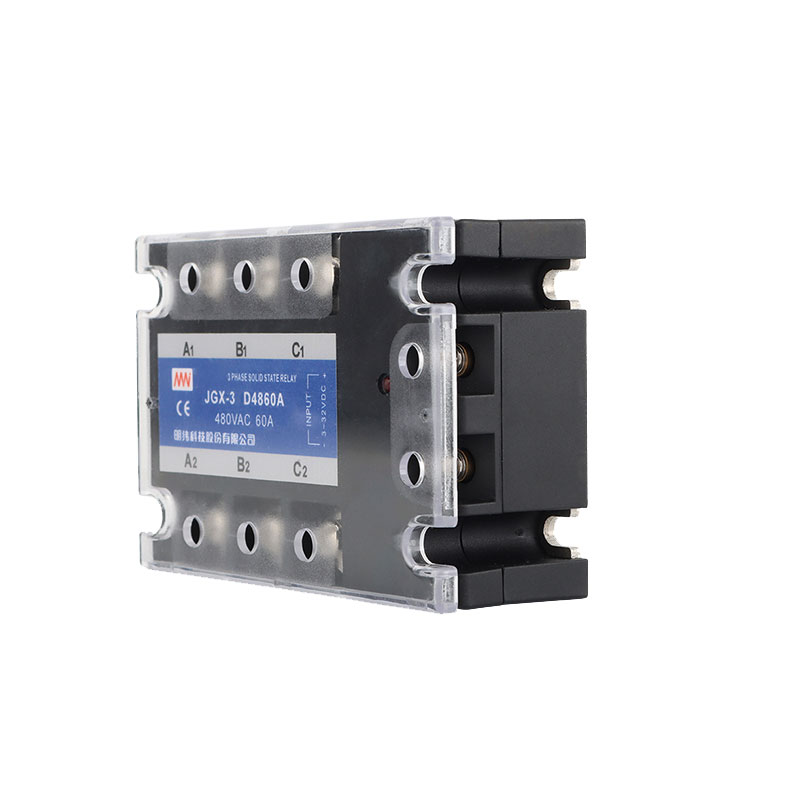Components of a three-phase solid-state relay
2023-10-16
A three-phase solid-state relay (SSR) is an electronic switching device designed to control three-phase electrical loads without the use of mechanical contacts or relays. These SSRs are commonly used in industrial and commercial applications to switch and control three-phase AC (alternating current) loads, such as motors, heaters, pumps, and other high-power equipment. They offer several advantages over traditional electromagnetic relays, including faster switching times, longer service life, and reduced wear and tear.
Here are the key features and components of a three-phase solid-state relay:
1. Input Control Signals: Just like single-phase SSRs, three-phase SSRs have input terminals for control signals. These signals are usually low-voltage, such as 3-32V DC or 4-20 mA, and are used to activate or deactivate the relay.
2. Output Switching Elements: Three-phase SSRs are equipped with semiconductor switching elements, typically thyristors (SCRs) or triacs, on the output side. These elements can handle the switching of all three phases of the AC load.
3. Isolation: SSRs provide electrical isolation between the control input and the output to ensure the safety of control circuits and personnel. This isolation is usually achieved using optical coupling or other isolation techniques.
4. Zero Crossing: Many three-phase SSRs are designed to switch the load at the zero-crossing point of the AC waveform for reduced electrical noise and minimal stress on the connected equipment.
5. Heat Sinks: Due to the potential for generating significant heat during operation, three-phase SSRs are often mounted on heat sinks to dissipate heat effectively and maintain proper operation.
6. Status Indicators: Some three-phase SSRs include status indicators (usually LEDs) to provide visual feedback on the relay's state for each phase (on or off).
Three-phase SSRs are utilized in a wide range of applications, including:
- Motor Control: Controlling the operation of three-phase AC motors in industrial machinery, conveyor systems, pumps, and fans.
- Heating Systems: Regulating the power supplied to three-phase heaters in industrial furnaces, ovens, and heating processes.
- Industrial Automation: Three-phase SSRs are commonly employed in PLC (Programmable Logic Controller) systems for precise control of three-phase loads in manufacturing and process control.
- Packaging Machinery: Used in packaging equipment to control the operation of three-phase motors, conveyors, and other components.
- HVAC Systems: Three-phase SSRs are utilized in HVAC (Heating, Ventilation, and Air Conditioning) systems for controlling motors and other equipment.
- Renewable Energy: In applications such as solar inverters and wind turbine control systems, where three-phase power needs to be switched and controlled.
It's important to choose the appropriate three-phase SSR for a given application based on factors such as the load current, voltage, frequency, and switching requirements. Additionally, consideration should be given to thermal management to prevent overheating, especially when switching high-power loads.



